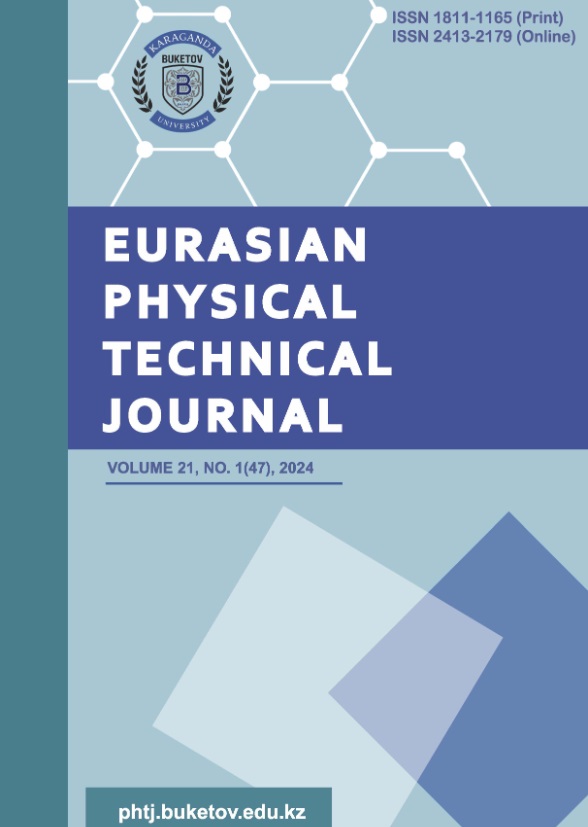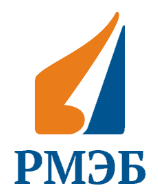Атом электр станциясындағы ауыр апаттар кезінде кориумда қалдық энергия бөлуді имитациялау әдістерін салыстырмалы талдау
DOI:
https://doi.org/10.31489/2024No1/57-66Кілт сөздер:
атом электр станциясы, ауыр апат, кориум, қалдық энергияның бөлінуі, модельдеуАңдатпа
Атом электр станциясындағы ауыр апаттың даму процесінде белсенді аймақ материалдарының еруі және кориумның пайда болатыны белгілі. Кориумның ерекшелігі-оның реактор қондырғысының құрылымдық материалдарымен өзара әрекеттесу сипатына елеулі үлес қосатын қалдық энергия бөлудің болуы. Осы себепті кориум прототипіндегі қалдық энергия бөлінуін модельдеу әдістеріне көлемдік таралудың біркелкілігіне де, оның қарқындылығына да қатысты айтарлықтай талаптар қойылады. Берілген жұмыста кориумдағы қалдық энергия бөлінудің имитациялаудың қолданыстағы әдістеріне салыстырмалы талдау келтірілген. Бұл әдістер атом электр станциясындағы реактордың балқуымен ауыр апаттар кезінде пассивті қорғаныс жүйелерінің жұмысын зерттейтін әртүрлі эксперименттік қондырғыларда қолданылады. Әдістердің артықшылықтар мен кемшіліктерін салыстыру арқылы қалдық энергияны имитациялаудың неғұрлым практикалық әдісі анықталады және нақты кориумның жылулық өрісін толығымен имитациялау үшін таңдалған әдісті одан әрі жетілдіру жолдары ұсынылады.
References
Molchanov I.A., Shumilin M.P. Retention of the core melt inside the containment during severe accidents of nuclear power units. Eastern-European journal of enterprise technologies, 2011, Vol. 2, No. 8(50), pp. 65-67. https://doi.org/10.15587/1729-4061.2011.1843 [in Russian].
Dolganov K.S. Possibility of misleading readings of water level in VVER steam generator during severe accidents with account for the Fukushima lessons. Nucl. Eng. Des., 2023, Vol. 413, https://doi.org/10.1016/j.nucengdes.2023.112519
Skakov М.K., Toleubekov K.O., Baklanov V.V., Gradoboev А.V., Akayev A.S., Bekmuldin M.K. The method of corium cooling in a core catcher of a light-water nuclear reactor. Eurasian phys. tech. j., 2022, Vol. 41, pp. 69–77. https://doi.org/10.31489/2022No3/69-77
Bondar F.D., Artamonov M.V., Sidorov A.S. The influence of the accuracy of the calculation of residual energy release on corium catcher justification during BDBA. Journal of Physics: Conf. Series, 2018,, pp. 1-10. DOI:10.1088/1742-6596/1133/1/012014
Mukhamedov N.Ye., Kozhakhmetov Ye.A., Tskhe V.K. Microstructure and mechanical properties of the solidified melt obtained by the in-pile test. Annals of Nuclear Energy, 2022, pp. 179. https://doi.org/10.1016/j.anucene.2022.109404
Andrushechko S.A., Afrov A.M., Vasiliev B.Yu. WWER-1000 reactor NPP. From physical basis of operation up to project evolution, Logos. 2010. pp. 604. [In Russian] https://elib.biblioatom.ru/text/andrushechko_aes-s- reaktorom-vver-1000_2010/p0/
Fink J.K., Thompson D.H., Spencer B.W. Aerosol and melt chemistry in the ACE molten core-concrete interaction experiments. High Temperature and Materials Science. 1995. Vol. 33(1), pp. 51-76. https://inis.iaea.org/search/search.aspx?orig_q=RN:27019724
Journeau C., Piluso P., Haquet J.F. Two-dimensional interaction of oxidic corium with concretes: The VULCANO VB test. Annals of Nuclear Energy series, 2009, Vol. 36, pp. 1597– 1613. https://doi.org/10.1016/j.anucene. 2009.07.006
Foit J.J. MCCI of a Metal and Oxide Melt with Reinforced Siliceous Concrete in MOCKA Experiments. Proc. of the 22nd Intern. Conf. on Nuclear Engineering, Prague, Czech Republic, 2014. https://doi.org/10.1115/ICONE22-30200
Baklanov V.V., Zhdanov V.S., Malysheva Ye.V. Experimental study of processes during retention of corium melt in the reactor vessel (INVECOR). Bulletin of NNC RK, 2009, Vol. 37, pp. 55-65. [In Russian] https://www.nnc.kz/media/bulletin/files/AIVJZeUkpq.pdf
Foit J.J. Experiments on MCCI with oxide and steel. Annals of Nuclear Energy, 2014, Vol.74, pp.100 – 109. https://doi.org/10.1016/j.anucene.2014.06.025
Farmer, M.T., Lomperski, S., Kilsdonk, D.J. OECD MCCI-2 Project Final Report. OECD/MCCI. 2010. Vol. 07, pp. 91. https://doi.org/10.13140/RG.2.2.27550.79687
Journeau C. Contributions of the VULCANO Experimental Programme to the Understanding of MCCI Phenomena. Nuclear engineering and technology, 2012, Vol. 44 (3), pp. 261-272. https://doi.org/10.5516/NET.03.2012.703
Maruyama Yu., Tahara M., Nagasaka H. Recent results of MCCI studies in COTELS project. Proceeding of the 3rd Korea-Japan Symposium on Nuclear Thermal Hydraulics and Safety Kyeongju, Korea, 2002. https://doi.org/10.13140/2.1.3997.1206
Song, J., Kim, H., Hong, S. A use of prototypic material for the investigation of severe accident progression. Progress in Nuclear Energy, 2016, Vol. 93, pp. 297–305. https://doi.org/10.1016/j.pnucene.2016.09.003
Spindler B., Atkhen, K., Cranga M. Simulation of Molten Corium Concrete Interaction in a Stratified configuration: the COMET L2-L3 Benchmark. Proceeding of the 2nd European Review Meeting on Severe Accident Research (ERMSAR-2007) Karlsruhe, Germany, 2007. https://www.researchgate.net/publication/239556995 Simulation of_Molten_Corium_Concrete_Interaction_in_a_Stratified_Configuration_the_COMET-L2-L3_Benchmark
Bekmuldin M.K., Skakov M.K., Baklanov V.V. Experimental Simulation of Decay Heat of Corium at the Lava-B Test-Bench. Nuclear Technology, 2023, Vol.210, pp. 46-54. https://doi.org/10.1080/00295450.2023.2226539
Toleubekov K.O., Akaev A.S., Bekmuldin M.K. Improving the efficiency of the induction heating system to simulate decay heat in corium when interacting with heat-resistant materials. Bulletin of the NNC RK, 2020, Vol. 4, pp. 47-52. [In Russian] https://www.nnc.kz/media/bulletin/files/wus8l5EKb2.pdf
Miassoedov A., Cron T., Gaus-Liu X. LIVE experiments on melt behavior in the reactor pressure vessel lower head. Proceeding of the 8th Intern. Conf. on Heat Transfer, Fluid Mechanics and Thermodynamics, 2011. Vol. 34(14), pp. 793 – 801. https://doi.org/10.1080/01457632.2013.777247
Toleubekov K.O. Modeling the process of decay heat imitation in the corium at the Lava-B facility. Recent Contributions to Physics, 2022, Vol. 81, No 2, pp. 97-106. https://doi.org/10.26577/RCPh.2022.v81.i2.012
Downloads
Жарияланды
How to Cite
Журналдың саны
Бөлім
License

This work is licensed under a Creative Commons Attribution-NonCommercial-NoDerivatives 4.0 International License.













